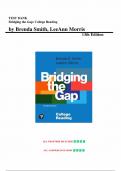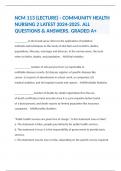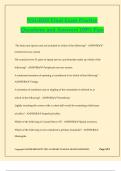BMZ ACADEMY
THE BMZ ACADEMY
@061 262 1185/068 053 8213
BMZ ACADEMY 061 262 1185/068 053 8213
, BMZ ACADEMY
QUESTION 1: The Significance of the Intersectionality Approach in Public Policy
Intersectionality is a concept introduced by Kimberlé Crenshaw in 1989, highlighting
how social categories such as race, gender, class, and others intersect, leading to
overlapping systems of disadvantage or privilege (Crenshaw, 1989). In public policy,
this approach is critical because it helps uncover how different forms of inequality
interact and manifest in unique ways for different individuals or groups.
1.1 Addressing Complex Inequalities
Traditional public policies often focus on one form of inequality at a time. For instance,
policies designed to promote gender equality might focus solely on women without
considering how race or economic class shapes their experiences. Intersectionality
ensures that policymakers recognize these multiple layers of disadvantage. An
example is the development of affirmative action policies in South Africa, which
consider both race and gender in addressing inequality. While affirmative action
initially focused on race due to apartheid’s legacy, the inclusion of gender ensures that
Black women, who face both racial and gender discrimination, benefit from these
policies (Stewart, 2020).
1.2 Enhancing Social Justice and Equity
The intersectionality approach in public policy promotes a more nuanced
understanding of social justice. By recognizing how power dynamics operate across
multiple axes, intersectionality prevents one-size-fits-all solutions that may
unintentionally favor some groups over others. For example, policies addressing
poverty might overlook the unique struggles of immigrant women who face both
economic and cultural barriers. By applying intersectionality, policymakers ensure that
solutions are inclusive and targeted. This concept was successfully integrated into
Canada’s policy on gender-based violence, where Indigenous women, LGBTQ+
people, and other marginalized groups were prioritized due to their unique
vulnerabilities (Hankivsky, 2014).
1.3 Creating Tailored and Inclusive Policies
BMZ ACADEMY 061 262 1185/068 053 8213
, BMZ ACADEMY
Intersectionality allows for the development of more targeted and inclusive policies.
For example, public health policies that only focus on economic class might miss how
race and gender impact access to healthcare. In the U.S., African American women
are disproportionately affected by maternal mortality, which stems from both racial bias
in healthcare and the intersection of poverty and gender (Bailey et al., 2017). By
acknowledging these intersections, policies can be designed to address these specific
gaps, such as through cultural competence training for healthcare providers and
targeted healthcare access programs.
1.4 Improving Service Delivery
Policies that incorporate an intersectionality framework ensure equitable service
delivery by recognizing the diverse needs of marginalized groups. For instance, in
education, policies aimed at improving access to higher education must consider the
intersection of race, gender, and disability. In South Africa, the National Student
Financial Aid Scheme (NSFAS) was originally designed to support economically
disadvantaged students but has been expanded to address specific challenges faced
by students from rural areas, women, and disabled learners, ensuring that the policy
is truly inclusive (NSFAS, 2022).
1.5 Transforming Power Structures
Intersectionality challenges dominant power structures by revealing how certain
policies reinforce existing privileges. Policies that focus solely on economic inequality
might leave out how racial or gender-based discrimination perpetuates poverty for
specific groups. The #BlackLivesMatter movement, for example, highlights how racial
inequalities intersect with police violence and economic disenfranchisement, showing
that reforms focused solely on police accountability must also address broader social
inequalities (Taylor, 2016).
Conclusion
Incorporating intersectionality into public policy enhances its ability to address complex
and overlapping systems of inequality, making policies more effective, inclusive, and
equitable. By recognizing the multiple and interrelated forms of disadvantage that
BMZ ACADEMY 061 262 1185/068 053 8213
, BMZ ACADEMY
individuals face, policymakers can create more holistic solutions that promote social
justice across different sectors of society (Crenshaw, 1989).
QUESTION 2: Can a Development Policy Serve Both the Goals of Distributive
and Redistributive Justice?
Distributive justice refers to the fair allocation of resources among all members of
society, while redistributive justice focuses on rectifying existing inequalities by
redistributing wealth and resources from the more affluent to the less privileged
(Rawls, 1971). While these two forms of justice may seem contradictory, a
development policy can, in fact, serve both objectives if designed thoughtfully.
2.1 Distributive Justice in Policy Design
Distributive justice ensures that resources such as healthcare, education, and
infrastructure are allocated fairly to everyone. A classic example is South Africa’s
universal basic education policy, which guarantees free access to primary
education for all children. This policy follows distributive justice principles by providing
an essential public good (education) to everyone, regardless of their socio-economic
status (Department of Basic Education, 2017).
2.2 Redistributive Justice in Correcting Historical Inequalities
Redistributive justice goes further by addressing the systemic inequalities that
disadvantaged groups face due to historical or structural factors. In post-apartheid
South Africa, redistributive policies like Black Economic Empowerment (BEE) were
introduced to correct economic imbalances by giving previously disadvantaged groups
access to capital, employment, and business opportunities (Bhorat et al., 2020). BEE
focuses on redistributing resources to historically marginalized groups (primarily Black
South Africans), which helps rectify past injustices caused by racial discrimination.
2.3 Integrating Distributive and Redistributive Goals
BMZ ACADEMY 061 262 1185/068 053 8213







